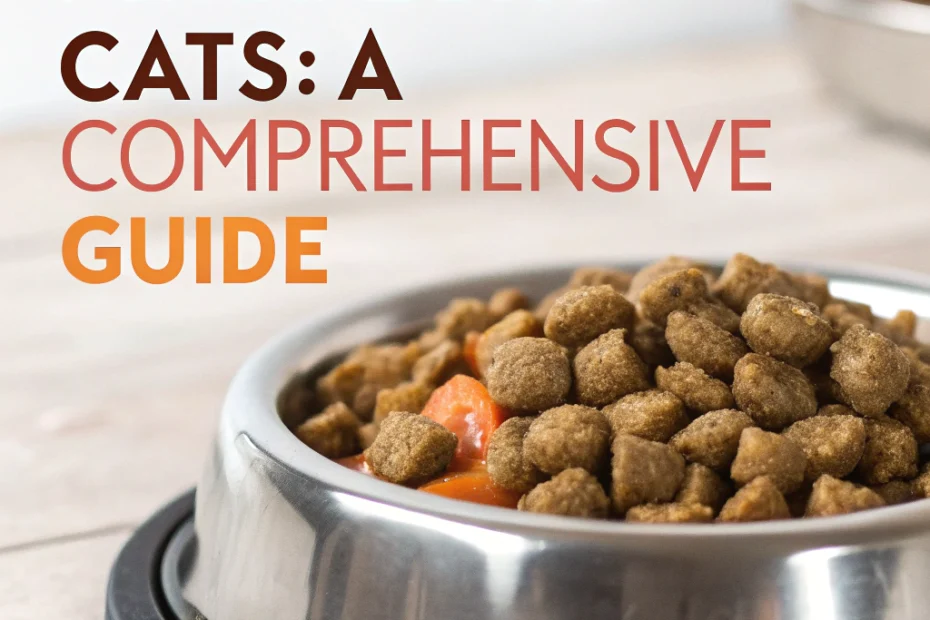At-a-Glance
Managing diabetes in cats can be challenging, but choosing the right cat food for diabetic cats may help support their health. This guide provides an overview of what to look for in diabetic cat food, safety tips, and how it compares to other dietary options. Understanding these elements can help you make informed decisions about your cat’s diet, potentially improving their quality of life.
How to Choose
When selecting cat food for diabetic cats, there are several factors to consider. First, look for food that is low in carbohydrates, as reducing carb intake can help manage blood sugar levels. High protein content is also beneficial, as it can support muscle maintenance and overall health.
Consider foods that are specifically formulated for diabetic cats. These products often contain balanced nutrients that may help regulate blood sugar levels. Additionally, wet food is commonly recommended over dry food because it typically contains fewer carbohydrates and more moisture, which is beneficial for hydration.
Consulting with your veterinarian can provide personalized recommendations based on your cat’s specific needs. They may suggest certain brands or formulations that align with your cat’s health requirements.
Safety & Setup
Ensuring the safety of your diabetic cat’s diet involves careful monitoring and setup. Introduce new foods gradually to observe how your cat reacts. Sudden changes in diet can cause digestive issues or affect blood sugar levels.
Keep a consistent feeding schedule to help stabilize your cat’s blood sugar. Regular meal times can prevent spikes and drops in glucose levels. It’s also important to monitor your cat’s weight and adjust food portions as needed, under the guidance of your veterinarian.
Always store cat food properly to maintain its freshness and nutritional value. Check expiration dates and avoid feeding your cat any food that appears spoiled or has an unusual odor.
Core Pillars
The core pillars of managing a diabetic cat’s diet include consistency, balance, and monitoring. Consistency in feeding times and food types helps maintain stable blood sugar levels. A balanced diet with appropriate nutrients supports overall health and well-being.
Monitoring your cat’s response to their diet is crucial. Regular veterinary check-ups can help track their health progress and make necessary dietary adjustments. Keeping a log of your cat’s food intake, weight, and any changes in behavior can be helpful for both you and your veterinarian.
Placement & Environment Tips
Creating a suitable feeding environment can encourage your cat to eat regularly. Place their food bowl in a quiet, comfortable area where they feel safe. This can reduce stress and promote better eating habits.
If you have multiple pets, ensure that your diabetic cat has access to their food without competition. This may involve feeding them in a separate room or at different times from other pets.
Consider using feeding puzzles or interactive feeders to engage your cat mentally and physically. These tools can slow down eating, which may help with digestion and prevent overeating.
Comparison with Alternatives
When comparing cat food for diabetic cats with other dietary options, it’s important to consider the specific needs of your pet. Regular cat food may not provide the necessary nutrient balance required for managing diabetes.
Prescription diets are often formulated to address specific health issues, including diabetes. These diets may offer more precise nutrient control compared to over-the-counter options. However, they can be more expensive and require a veterinarian’s prescription.
Homemade diets are another alternative, but they require careful planning and consultation with a veterinarian or a pet nutritionist to ensure they meet all of your cat’s nutritional needs.
FAQs
Can I feed my diabetic cat regular cat food?
Feeding regular cat food to a diabetic cat may not provide the necessary nutrient balance needed to manage their condition. It’s best to consult with your veterinarian for suitable dietary options.
How often should I feed my diabetic cat?
Feeding schedules can vary, but consistent meal times are crucial for managing diabetes. Your veterinarian can provide guidance on the best feeding schedule for your cat.
Are there specific ingredients I should avoid?
High-carbohydrate ingredients should generally be avoided in a diabetic cat’s diet. Look for foods that prioritize protein and have low carbohydrate content.
What to Do Next
Now that you have a better understanding of cat food for diabetic cats, consider discussing your options with your veterinarian. They can help tailor a diet plan that suits your cat’s specific health needs. Remember, managing diabetes is a collaborative effort between you and your vet, and the right diet can play a significant role in your cat’s health journey.
Disclaimer: Always consult your veterinarian for personalized advice regarding your cat’s health.
